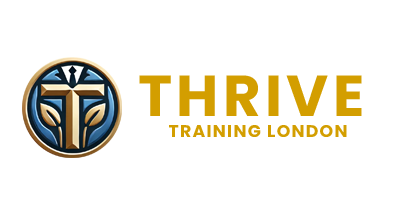Discover
Warehouse Management Systems (WMS)
YOUR PATHWAY TO SUCCESS
This 5-day course provides a comprehensive understanding of Warehouse Management Systems (WMS) and their critical role in optimizing warehouse operations. Participants will explore the key functionalities of a WMS, including receiving, put-away, inventory management, order fulfillment, and shipping.
Register Now
Take the next step in your learning journey and enroll in our course today! Whether you’re looking to upgrade your skills, advance your career, or explore a new passion, this course is designed to help you succeed. Secure your spot now and gain instant access to expert-led lessons, practical insights, and valuable resources. Don’t miss this opportunity—register now and start learning!
Course Duration
5 Days
Enroll By
Every Week
Course Type
Online/ London
Course Details
This 5-day course provides a comprehensive understanding of Warehouse Management Systems (WMS) and their critical role in optimizing warehouse operations. Participants will explore the key functionalities of a WMS, including receiving, put-away, inventory management, order fulfillment, and shipping. The course covers core concepts such as warehouse layout design, material handling equipment, and integration with other supply chain systems. Through real-world case studies and hands-on exercises, learners will gain insights into how leading companies leverage WMS technology to improve efficiency, accuracy, and visibility in their warehouse operations.
The course emphasizes the importance of selecting the right WMS for specific business needs and the challenges of implementing and integrating WMS software. It explores the various WMS functionalities in detail, including inventory tracking, location management, picking and packing strategies, and reporting capabilities. Participants will learn how to evaluate WMS vendors, configure WMS settings, and utilize WMS data to optimize warehouse processes.
By the end of this course, learners will be able to:
- Understand the key functionalities of a WMS.
- Evaluate and select a WMS for specific business requirements.
- Implement and configure a WMS.
- Integrate a WMS with other supply chain systems.
- Utilize a WMS to optimize warehouse operations.
- Analyze WMS data and generate reports.
- Warehouse managers
- Logistics professionals
- Inventory control specialists
- IT professionals involved in WMS implementation
- Operations managers
- Anyone seeking a comprehensive understanding of WMS
Course Outline
5 days Course
- Introduction to WMS: Functionality and Benefits:
- What is a WMS? Key functionalities and modules.
- Benefits of implementing a WMS: Improved efficiency, accuracy, visibility, and cost savings.
- Different types of WMS: Tiered systems, cloud-based solutions.
- Warehouse processes and how a WMS supports them.
- Case study: Analyzing the impact of a WMS implementation.
- Activity: Group discussion on the challenges of implementing a WMS.
- Receiving and Put-Away Processes in a WMS:
- Receiving process: Inbound logistics, receiving documentation, quality control.
- Put-away strategies: Directed put-away, random storage, fixed location storage.
- Inventory tracking and location management within a WMS.
- Integrating receiving with other warehouse operations.
- Practical exercise: Designing a put-away strategy using a WMS simulation.
- Inventory Management and Order Fulfillment in a WMS:
- Inventory management within a WMS: Cycle counting, stocktaking, inventory reporting.
- Order fulfillment process: Order processing, picking strategies (e.g., wave picking, zone picking), packing, and shipping.
- Integrating order fulfillment with other warehouse operations.
- Case study: Optimizing order picking using a WMS.
- Inventory Management and Order Fulfillment in a WMS:
- Shipping and Integration with Transportation Management Systems (TMS):
- Shipping process: Outbound logistics, shipment planning, carrier selection, and documentation.
- Integrating a WMS with a TMS for seamless shipping operations.
- Generating shipping documents and labels.
- Tracking shipments and providing visibility to customers.
- Practical exercise: Planning a shipment using a WMS and TMS integration.
- Shipping and Integration with Transportation Management Systems (TMS):
- WMS Implementation, Configuration, and Reporting:
- WMS implementation process: Project planning, vendor selection, system configuration, user training, and go-live.
- Configuring WMS settings to meet specific business needs.
- Generating reports and analyzing WMS data to optimize warehouse operations.
- Best practices for using a WMS.
- Case study: Implementing a WMS in a complex warehouse environment.
- Activity: Group project on developing a WMS implementation plan.

